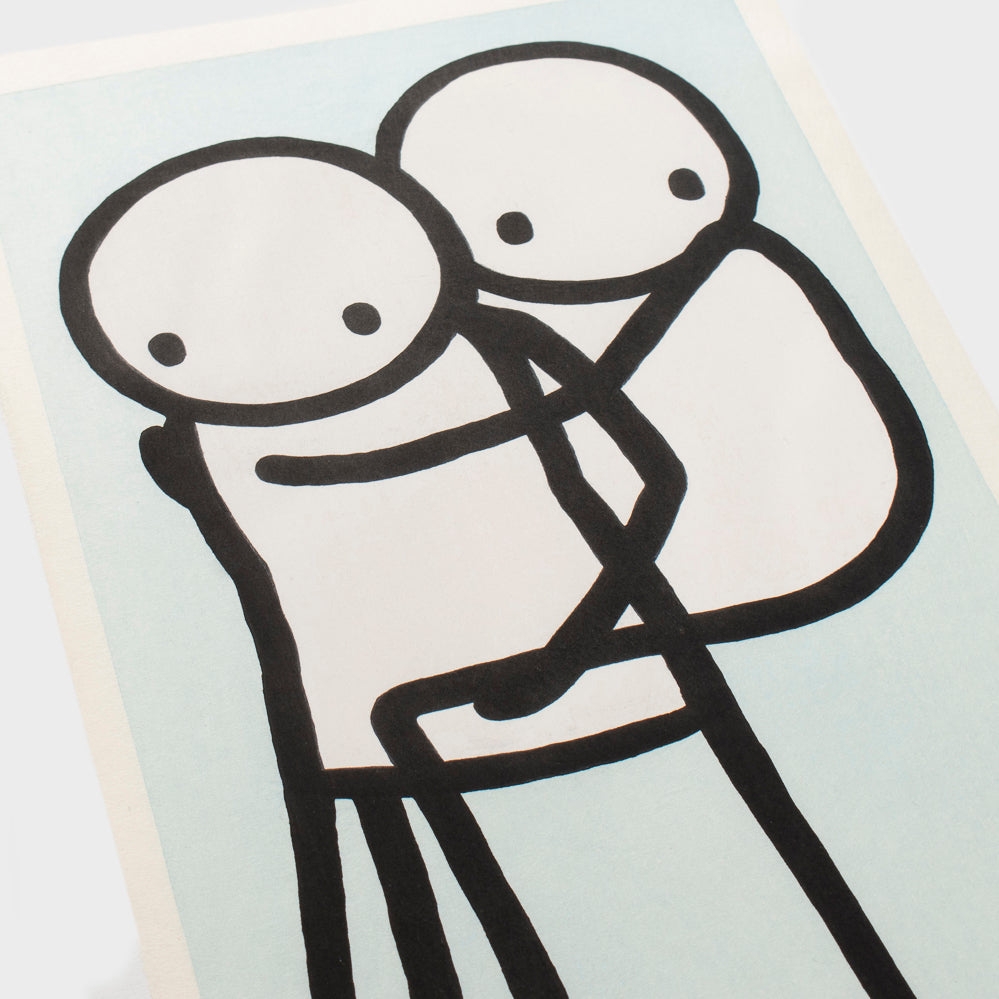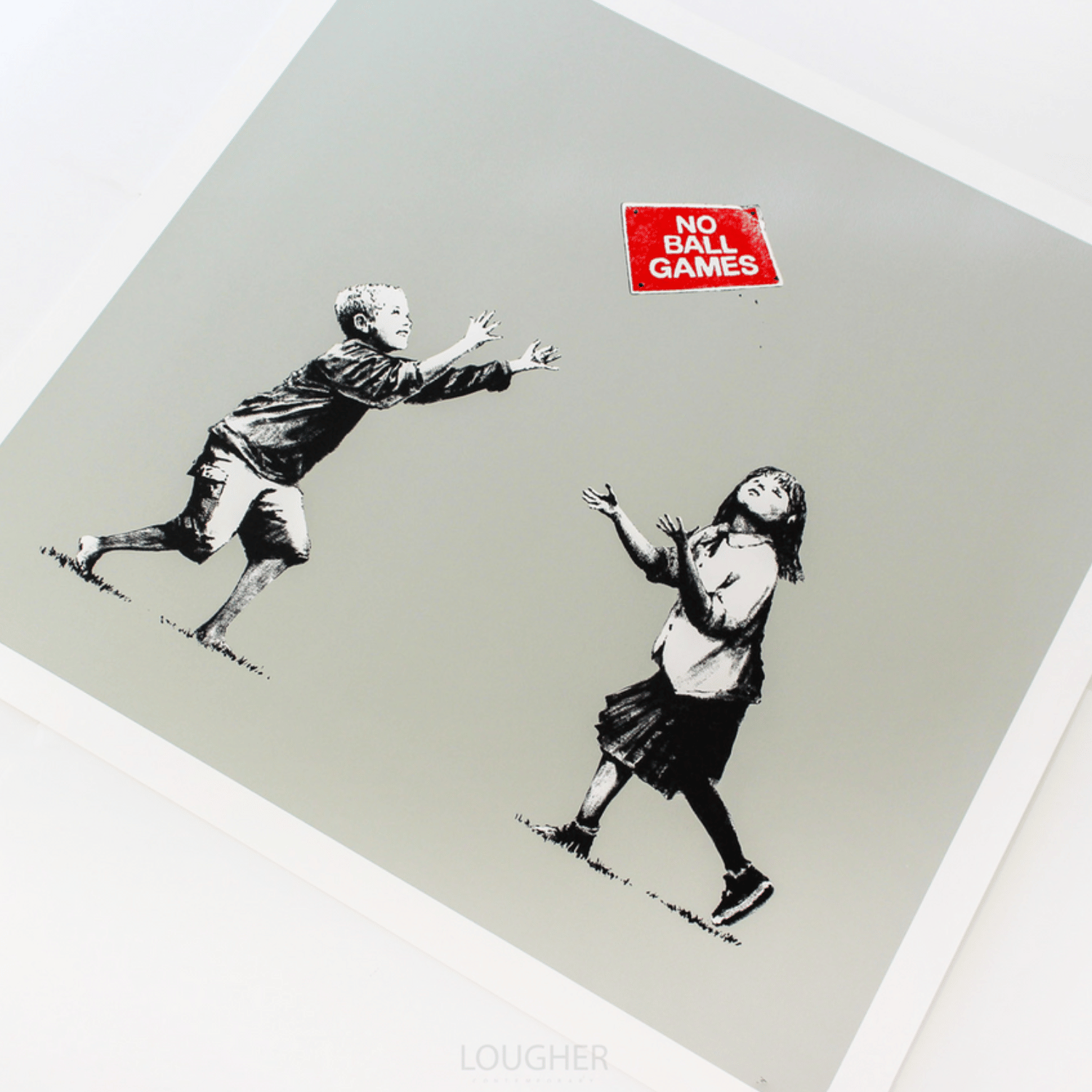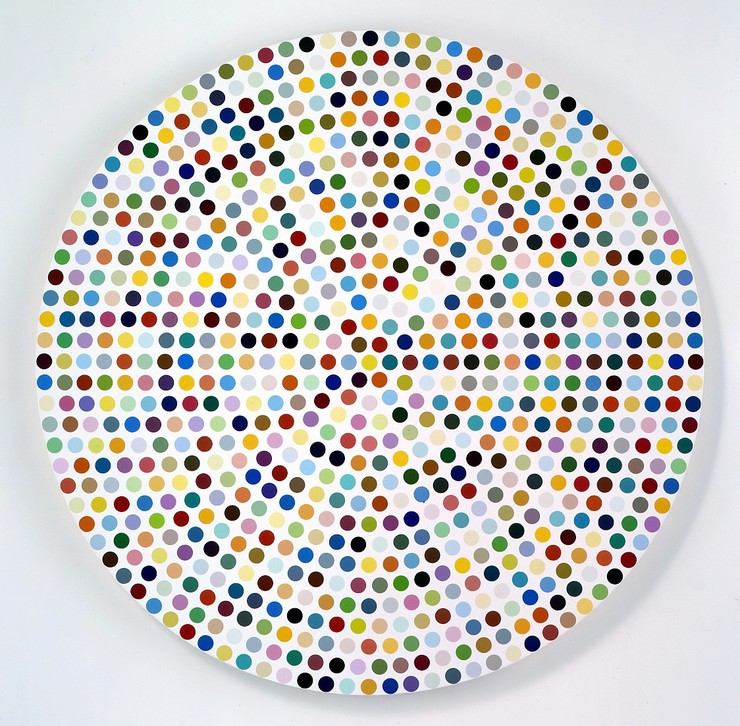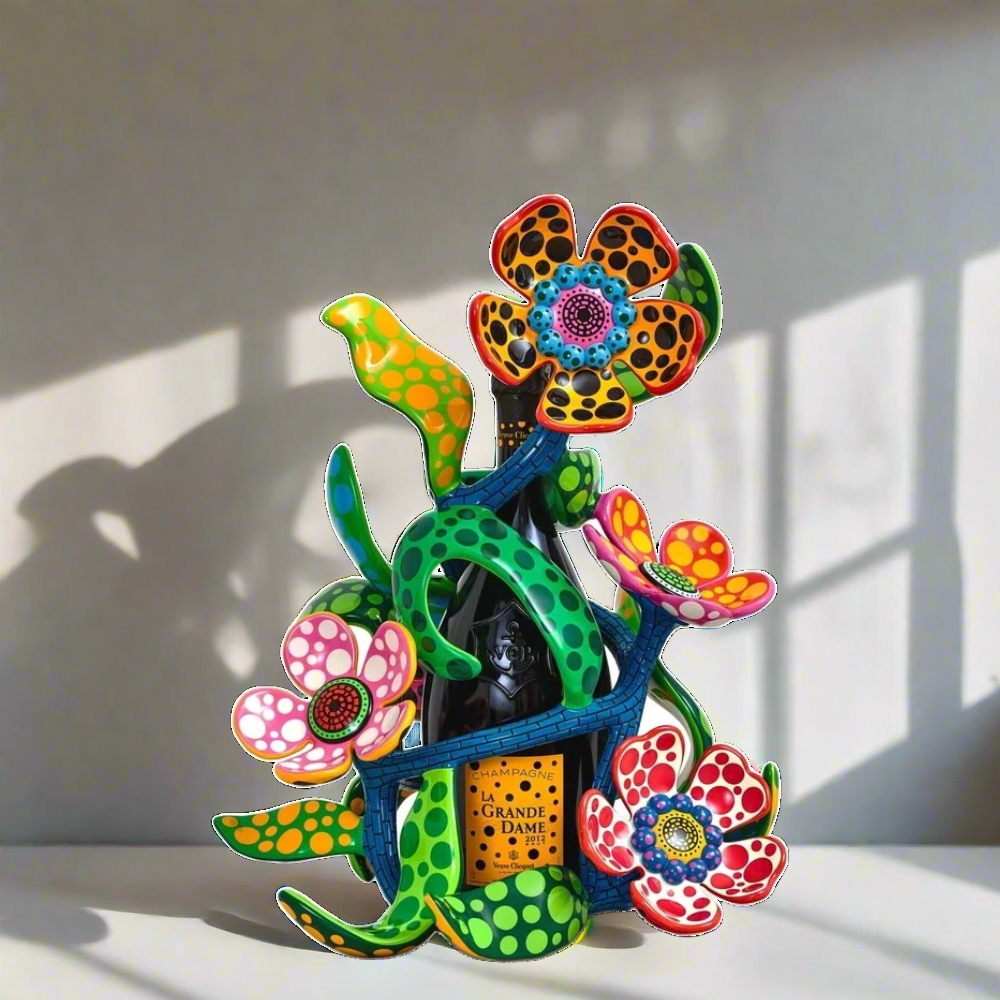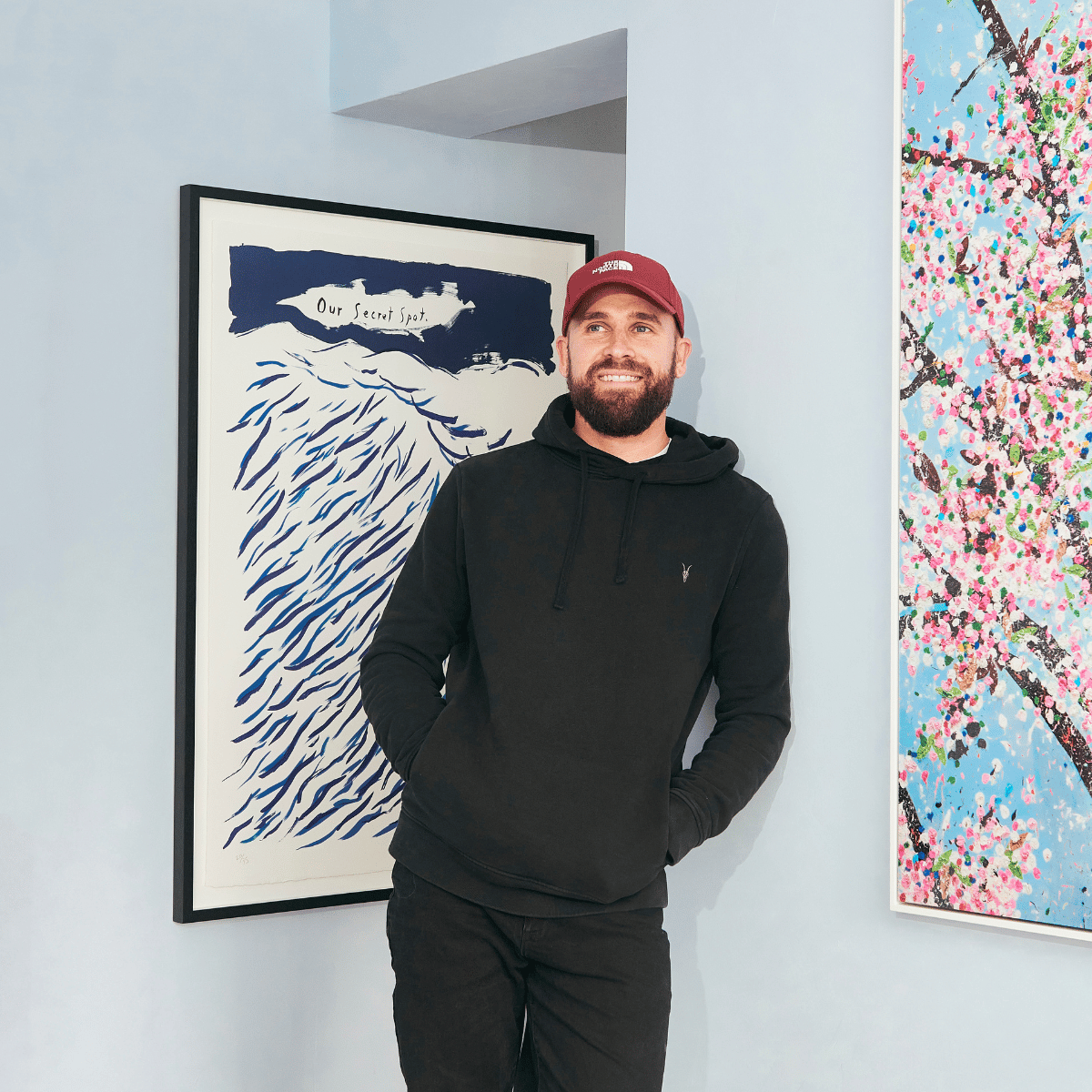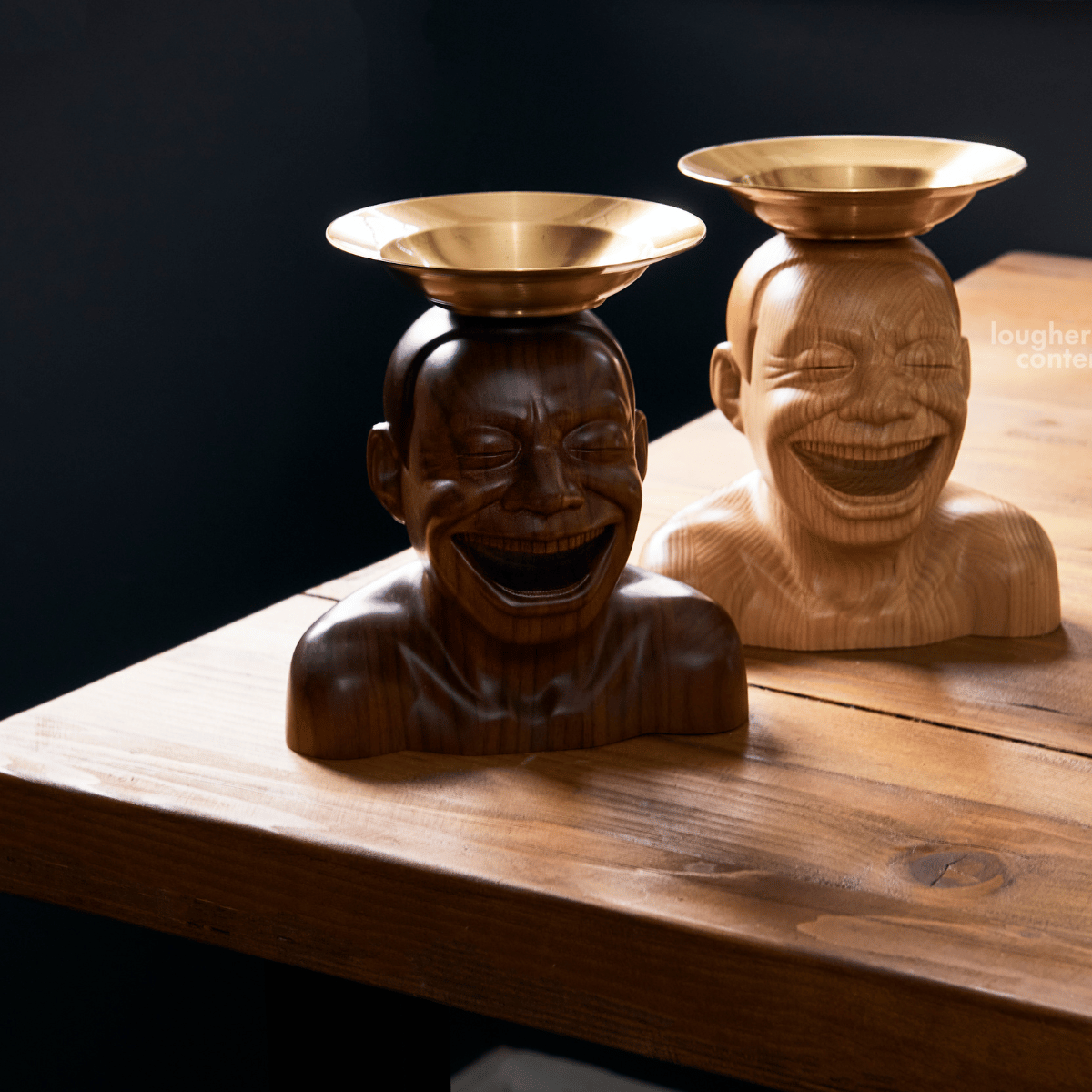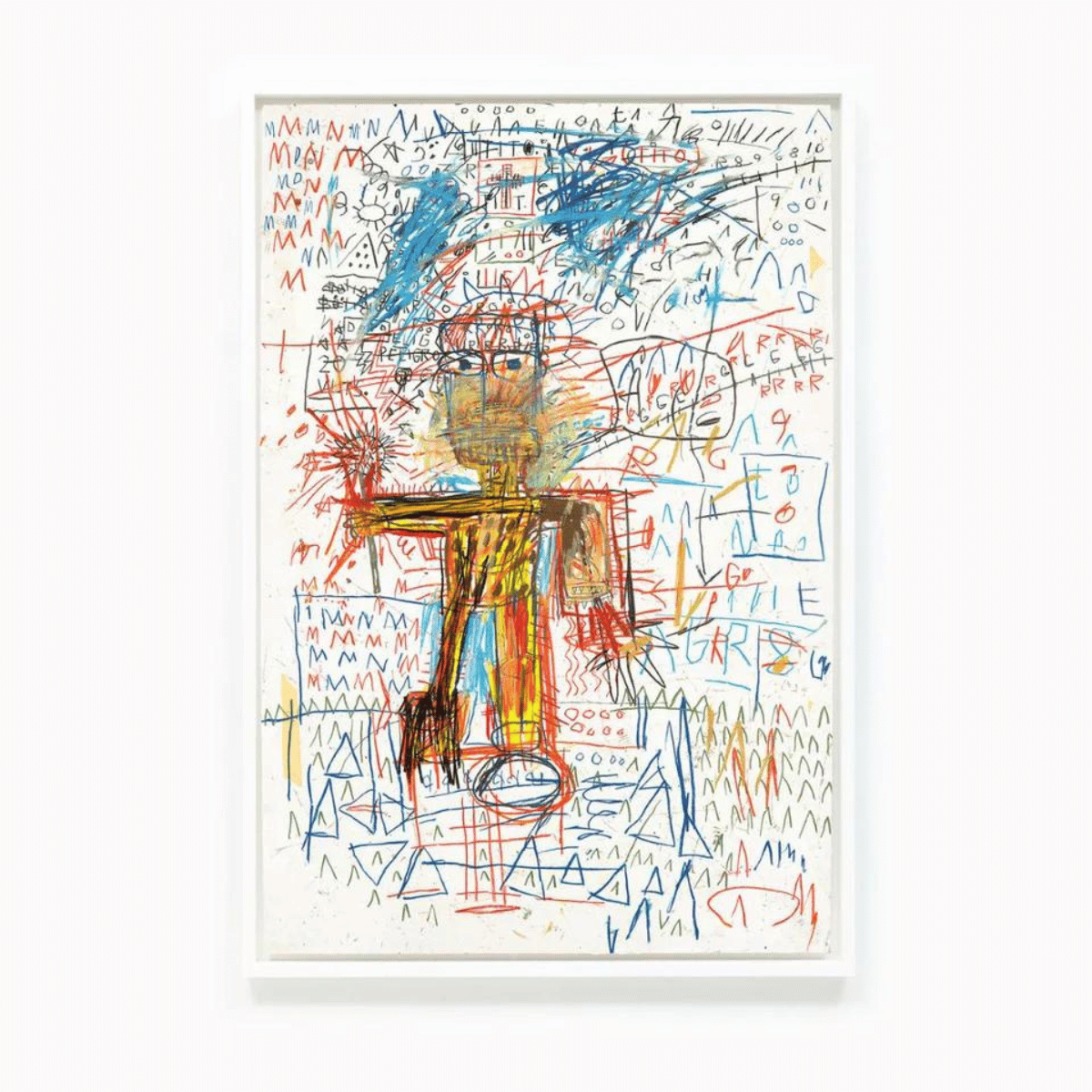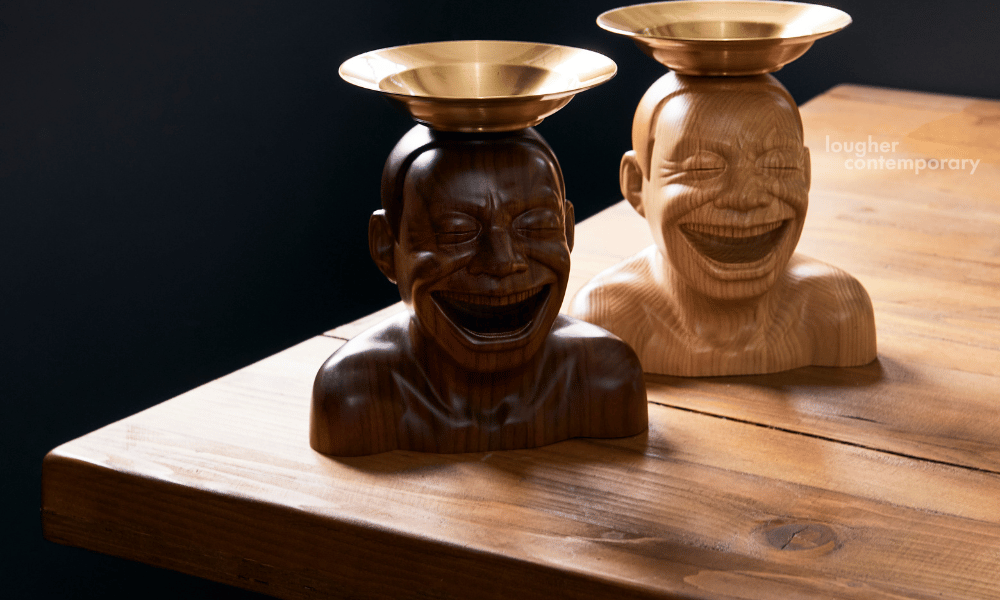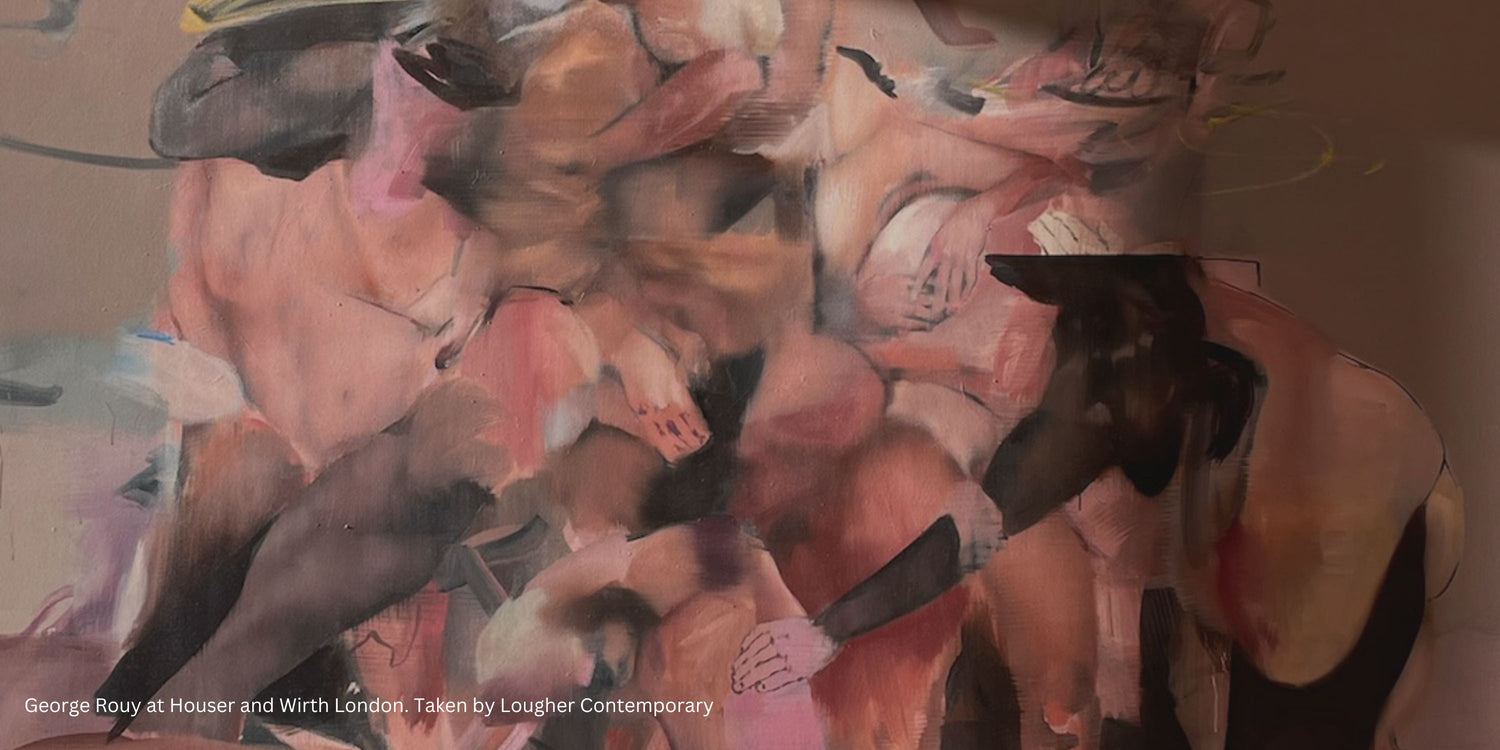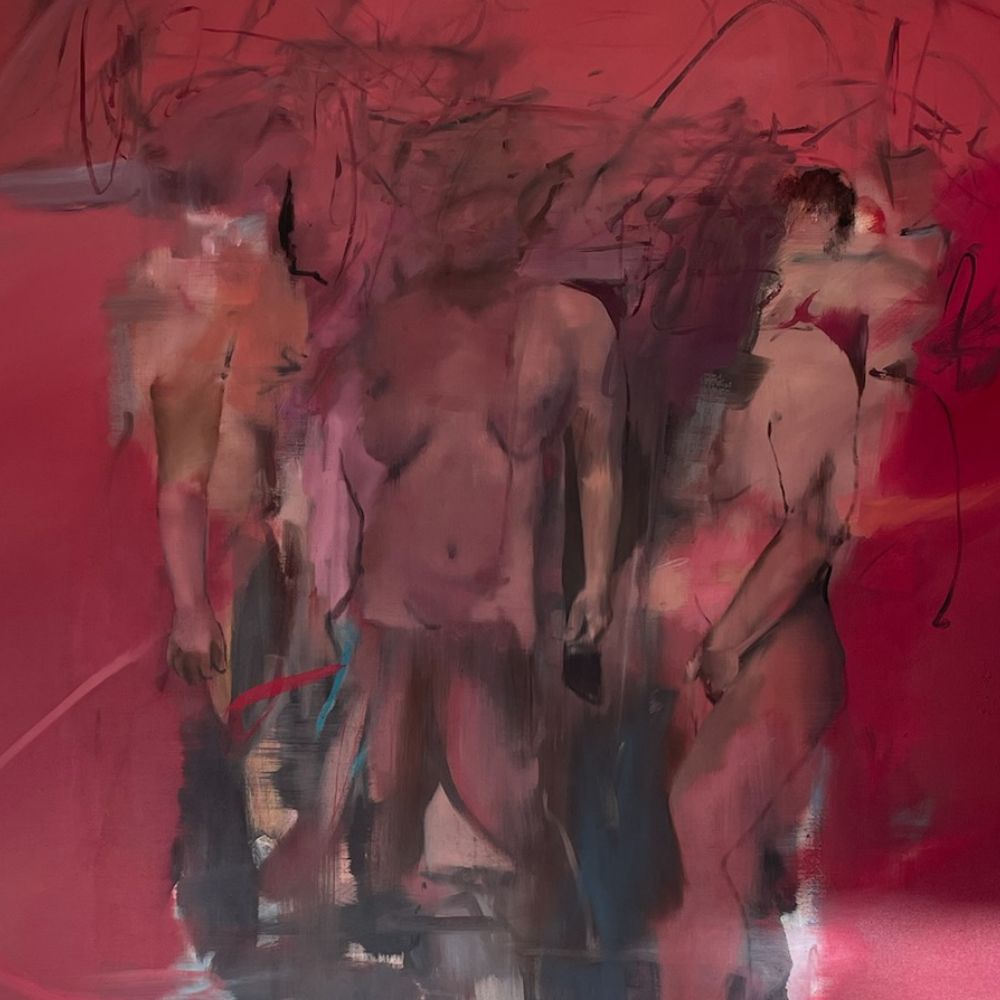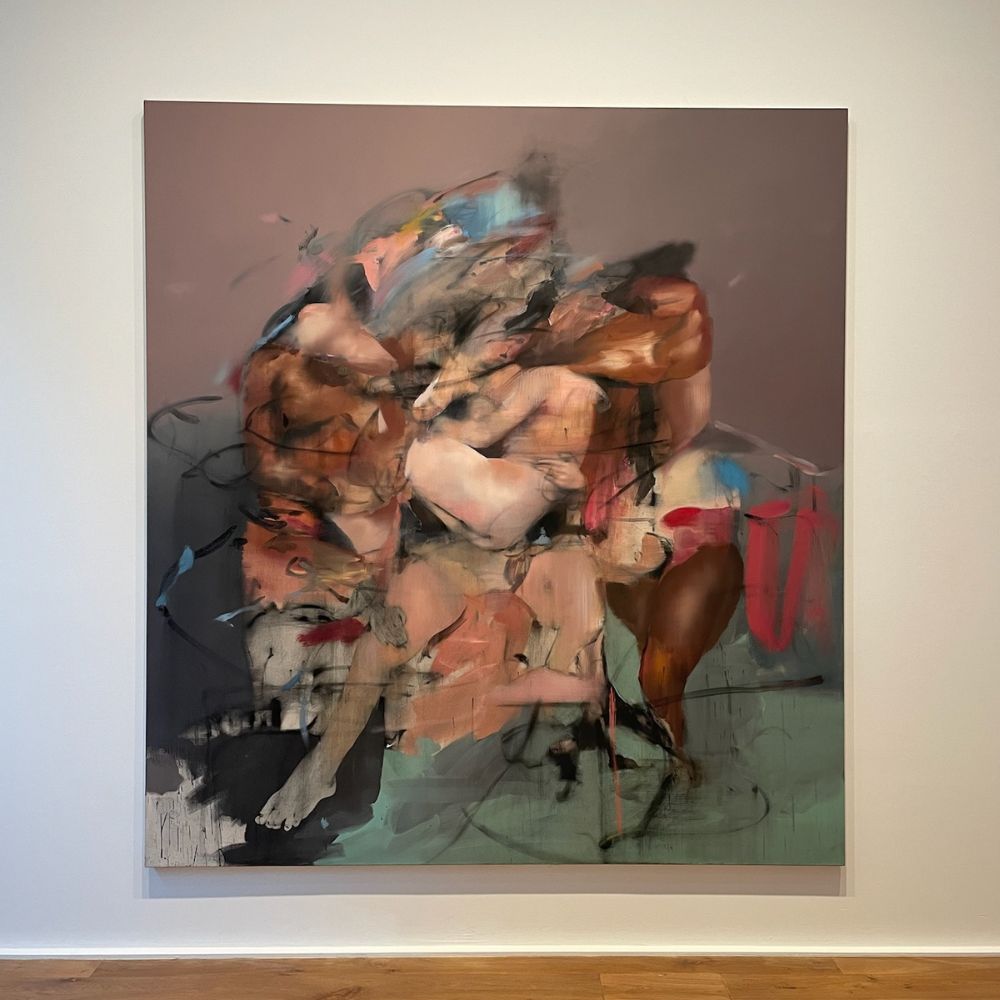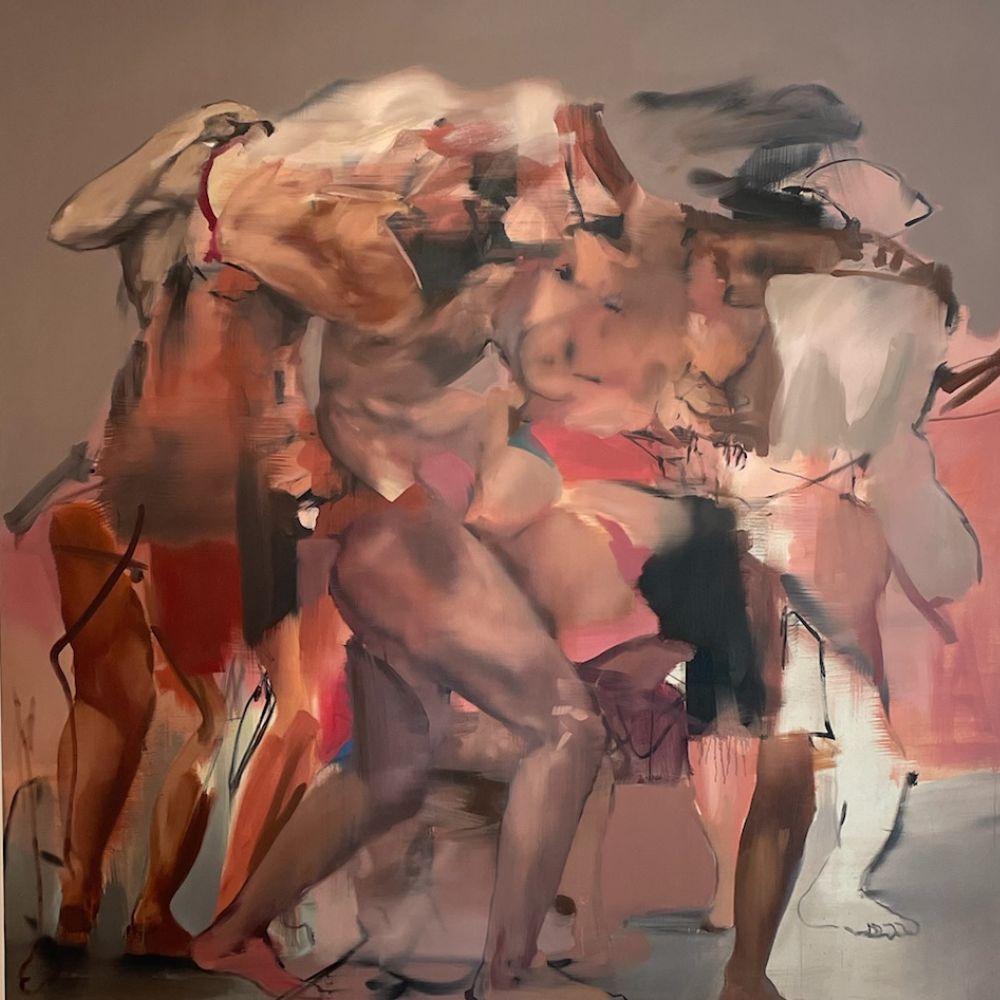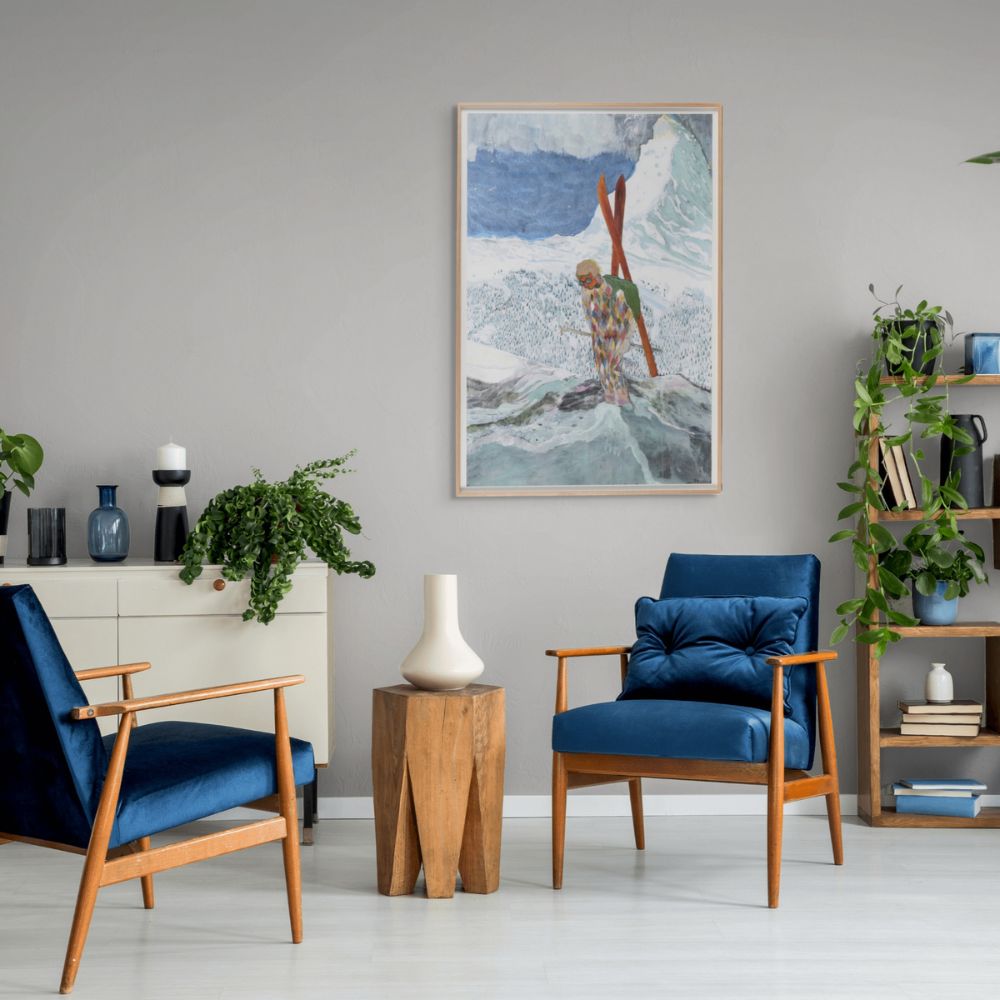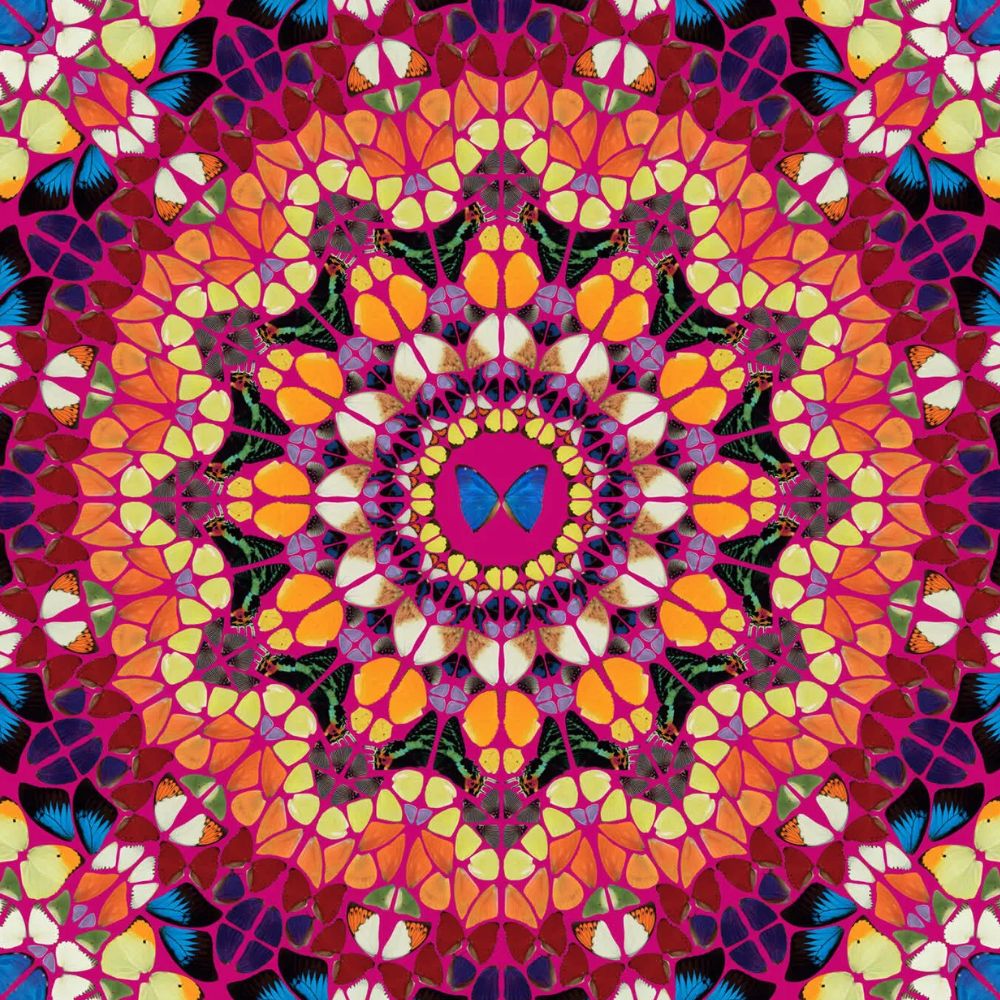Celebrated as one of the most dynamic young artists of his generation, George Rouy has unveiled ‘The Bleed, Part I’, his debut solo exhibition at Hauser & Wirth London. This two-part series explores the visceral themes of collective identity, multiplicity, and the body in motion. Known for his intense, abstracted representations of the human figure, Rouy’s latest work continues to delve into complex questions of identity and embodiment, presenting figures at the intersection of individual existence and shared human experience. This London exhibition is the first half of ‘The Bleed’, with Part II slated to open in Los Angeles in February 2025.
A Bold Exploration of the Collective Body
Rouy’s latest body of work centres on ideas of ‘collective mass’ and ‘collective care,’ evident in hauntingly distorted figures that seem intertwined or carried by others. His figures evoke a sense of weightlessness, inviting the viewer to reflect on vulnerability, support, and the intertwined nature of human existence. These ambiguous forms, merging at the borders, suggest both support and struggle, evoking scenes reminiscent of a Christ-like procession or perhaps a funeral, where figures blend into one another in a manner that erases individual boundaries.
Monochrome Mastery: Phantom Paintings
In a departure from his characteristic vibrancy, Rouy experiments with a monochrome palette for ‘The Bleed, Part I,’ resulting in what he calls ‘phantom paintings.’ Utilising silver pigments and black charcoal, these works are a study in shadow and illumination, exploring contrasts that bring out hidden elements of form. The dark palette amplifies the dramatic, surreal quality of Rouy’s work, where bodies appear both spectral and substantial. Through the stark contrasts of light and dark, Rouy uncovers previously unseen dimensions in his forms, producing a haunting effect that aligns with the otherworldly tone of the series.
Rouy’s Signature Style: Gestural Abstraction and Symbolism
Rouy’s distinct approach to figuration, developed over years of exploring complex themes in identity and embodiment, is unmistakable in this exhibition. Rather than using abstraction as a way of distancing from reality, Rouy’s gestural brushstrokes and fragmented figures act as signals—interruptions that guide the viewer through his compositions. These gestural marks prompt the eye to pause, to consider the disjointed and distorted figures within the work. Through these breaks and blurs, Rouy transforms each painting into a psychological landscape, encouraging viewers to meditate on the tensions between self and others, presence and absence.
Faces Erased, Hands as Guides
One of the most striking elements in Rouy’s recent work is the deliberate abstraction of faces, removing distinct markers of identity. With faces often blurred or completely absent, Rouy turns our focus towards hands—a feature which now becomes essential in guiding the viewer’s eye across the composition. The hands connect different elements, forming both literal and metaphorical bridges, underscoring the shared humanity and collective experience within each piece. This erasure of individual identity enables Rouy to tap into a broader, almost universal consciousness, moving beyond personal experience and allowing the viewer to step into an ambiguous yet deeply emotional space.

George Rouy’s ‘The Bleed, Part I’ at Hauser & Wirth London. Taken by Lougher Contemporary
From Digital to Physical: Rouy’s Evolving Creative Process
Known for his experimental approach, Rouy often integrates digital techniques into his work. Starting with rough gestural marks on canvas, he continues the process through photography and digital manipulation, using Photoshop to further develop his compositions. This unique workflow enables Rouy to push the boundaries of traditional painting, giving his work a distinctly modern edge. His paintings, laden with layered textures and complex compositions, reflect the digital age with elements of Photoshop-inspired blending and layering, capturing the aesthetic and emotional hybridity of the 21st century.

